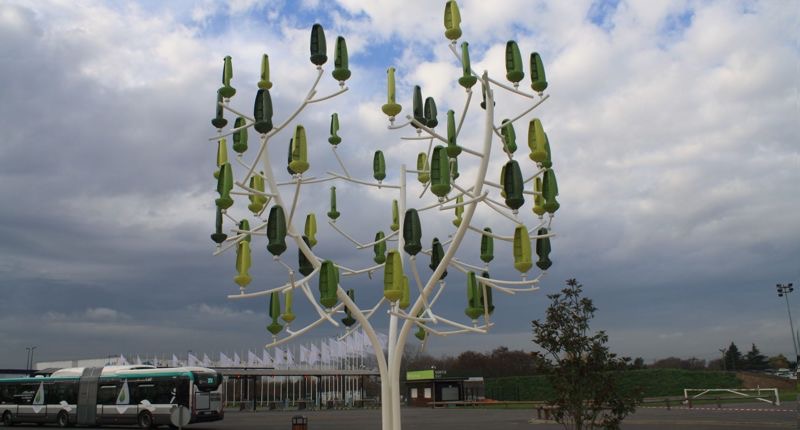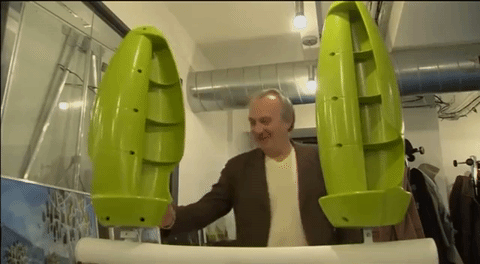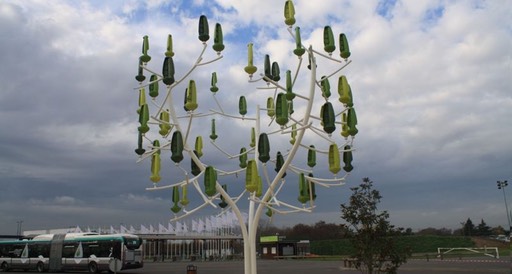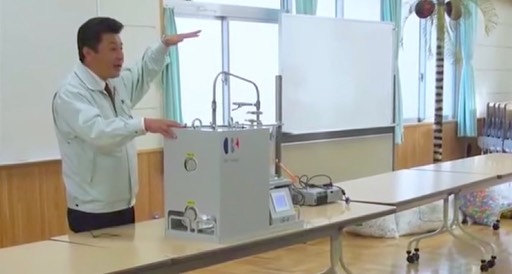
(Via: qz.com)
Picture a steady breeze blowing through the leaves of a tree. Now imagine these leaves could do more than simply churn in the current of air—what if they could capture the wind and transform it into renewable energy?
Energy from wind is the fastest-growing source of electricity in the world, according to the Union of Concerned Scientists, an environmental and social research institution.
This development of wind power has mostly taken place on a large scale, usually by utility companies providing power to a grid of millions of customers.
That’s because wind energy is most efficient when it’s capturing very strong winds, more common in remote areas and at heights greater than 50 feet off the ground. Those turbines need to be as tall as a five-story building, and they take up a lot of horizontal room, too—several hundred feet per turbine, in many cases. They also require more maintenance than solar panels.
All of these factors make it challenging to capture wind energy in small amounts. But that hasn’t stopped companies from experimenting in the hopes of one day allowing individual homeowners to capture energy from their own backyards or balconies, and reduce their reliance on fossil fuels.
Unlike larger industrial turbines, which need winds of over 22 miles per hour to function, the leaves captured energy from wind speeds of less than five mph.
New Wind was founded by former film and television writer…
Jérôme Michaud-Larivière in 2011, and created its first prototype in 2013. After working through several possible iterations, the company settled on a “seemingly chaotic” arrangement of leaf-turbines on each branch.
The latest design is just under 30 feet tall and 23 feet wide, sporting a total of 54 leaf-turbines that can capture up to 5.4 kilowatts of energy at a time and produce around 2,400 kWh annually, said New Wind spokesperson Marine Bieliaeff.
The startup estimates this would meet half of the average French household’s annual energy needs; run a small, low-consumption office for 12 months; or charge an electric car for 10,000 miles each year. That’s the equivalent of about 160 gallons of fuel.

In January, New Wind installed its first tree for a private company, the Swiss bank Piguet Galland.
They also have contracts to provide more trees to companies in France, Germany, Switzerland and Luxembourg in the year ahead, with plans to expand beyond Europe next year.
“A lot of companies are looking for renewable energy,” Bieliaeff said.
CEO Olivier Calloud called the Piguet Galland tree “as much a piece of art as an innovation in the domain of sustainable development.” And indeed, the trees in their current iteration are not a long-term or scalable solution, because they are not designed for household use—they weigh several tons and take up a good bit of room.
Then there’s the price: a single wind tree costs about €49,500 (about $56,000) to deliver and install. That’s not even close to cost-competitive with solar power. Photovoltaic solar panels producing the same amount of energy (5.4 kW) cost between €15,000-20,000 ($17,000-22,600) in France, according to the country’s environment and energy agency ADEME.
One advantage of the unusual wind turbines, however, is their adaptability to different locations. A 5.4 kW solar array would take up about 430 square feet of roof space—not an option for those living in apartments or houses without direct sunlight. But a wind tree’s curved branches could be attached to any balcony or rooftop, even in areas that don’t get much wind.
Small turbines for individuals are catching on; the Danish company Aeolos Wind Energy focuses on wind energy for homes, farms, and schools, and Urban Green Energy recently installed turbines on apartment rooftops in New York.

And New Wind is not the first company to design more attractive wind turbines inspired by nature. The Dutch firm NL Architects debuted the Power Flower design in 2010, and Leviathan Energy began developing its Flower Turbines three years later.
So far, New Wind has positioned aeropower at the intersection of art and sustainability, which appeals to businesses eager to take a green stance. But they plan to launch smaller, more customizable products for homes next year. “We will bet on modularity,” Bieliaeff said.
Rather than selling entire trees, the company would like to provide as many individual curved branches as a customer wants or needs. Such flexibility would allow those with small amounts of space or lower budgets to access at least some wind energy—and potentially prove that wind companies’ commitments to affordable, customizable turbines aren’t just hot air.
Below we feature a clip showing this revolutionary invention in action. Watch the clip, leave your comments below and share this article with your friends on social media today!

